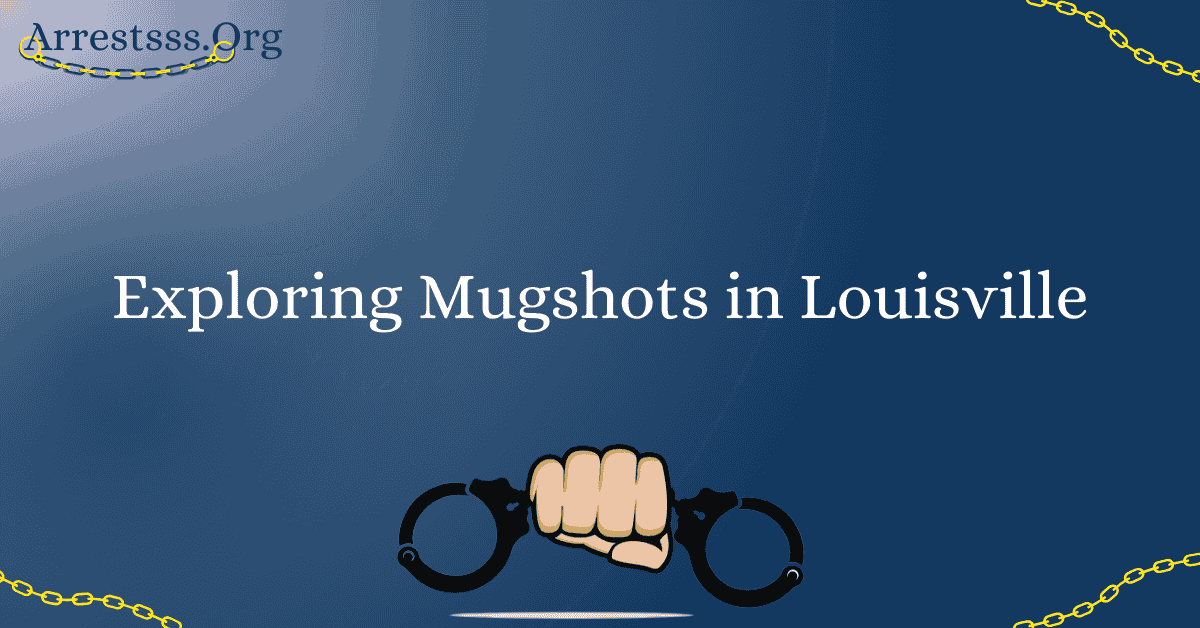Exploring Mugshots in Louisville

Mugshots, a term familiar to many, often evoke a sense of curiosity and intrigue. Louisville, a city steeped in history and culture, has its share of these snapshots in time. In this article, we delve into the world of “mugshots Louisville” to understand their significance, the process behind them, and their impact on individuals and the community.
Unveiling the Mugshot Experience
Before we embark on a deeper exploration, it’s crucial to grasp the significance of mugshots in Louisville and beyond. These images serve as critical tools in the criminal justice process, assisting law enforcement agencies, the judiciary, and the public in various ways.
The Evolution of Mugshots
Mugshots have come a long way since their inception. Initially introduced in the early 1800s, these photographs aimed to document and identify criminals. Over time, technological advancements transformed them from monochromatic, film-based images to digital records with intricate detail. The evolution of mugshots reflects changes in photography, law enforcement, and societal attitudes toward criminal justice.
The Legal Framework
Understanding the legal framework surrounding mugshots is crucial. Laws vary from state to state, and in Louisville, there are specific regulations governing their use and release. Privacy concerns and issues related to freedom of information intersect in the complex web of legal considerations. This section will shed light on the legal landscape and its implications.
Community Impact
Mugshots, once confined to police records, have become easily accessible online. This widespread dissemination has raised questions about their impact on individuals and communities. Stigmatization, discrimination, and the right to privacy all come into play. By examining case studies and real-life experiences, we can gain insight into how mugshots affect people’s lives.
The Role of Technology
The digital age has revolutionized how mugshots are stored and shared. Advances in facial recognition technology and databases have made it easier for law enforcement agencies to identify and track individuals. This section will explore the advantages and drawbacks of these technological advancements and their implications for privacy and civil liberties.
Alternatives and Reforms
In response to concerns about the potential misuse of mugshots, there have been calls for reforms and alternative methods of sharing arrest information. Initiatives like “ban the box” policies and sealing or expunging records aim to give individuals a chance to rebuild their lives without the perpetual stigma of a public mugshot. This section will examine such efforts and their effectiveness in reshaping the mugshot landscape.
FAQ’s
What is the history of mugshots in Louisville?
Mugshots in Louisville have a rich history dating back to the 19th century. They evolved from early photographic techniques to today’s digital records, serving as a vital tool in criminal identification.
Are mugshots considered public records in Louisville?
Yes, mugshots are typically considered public records in Louisville. However, their release and accessibility are subject to legal regulations that may vary by jurisdiction.
How do mugshots impact individuals’ lives in Louisville?
Mugshots can have significant negative consequences, including stigmatization and difficulty finding employment or housing. They can also affect an individual’s right to privacy.
What efforts are underway to reform the use of mugshots in Louisville?
Louisville, like many places, is exploring reforms such as expungement options and restrictions on public access to mugshots to mitigate the potential harm they can cause.
How has technology changed the way mugshots are used in Louisville?
Technology has greatly enhanced the storage and sharing of mugshots in Louisville, with facial recognition and online databases playing a significant role in law enforcement practices. However, this has also raised concerns about privacy and surveillance.






